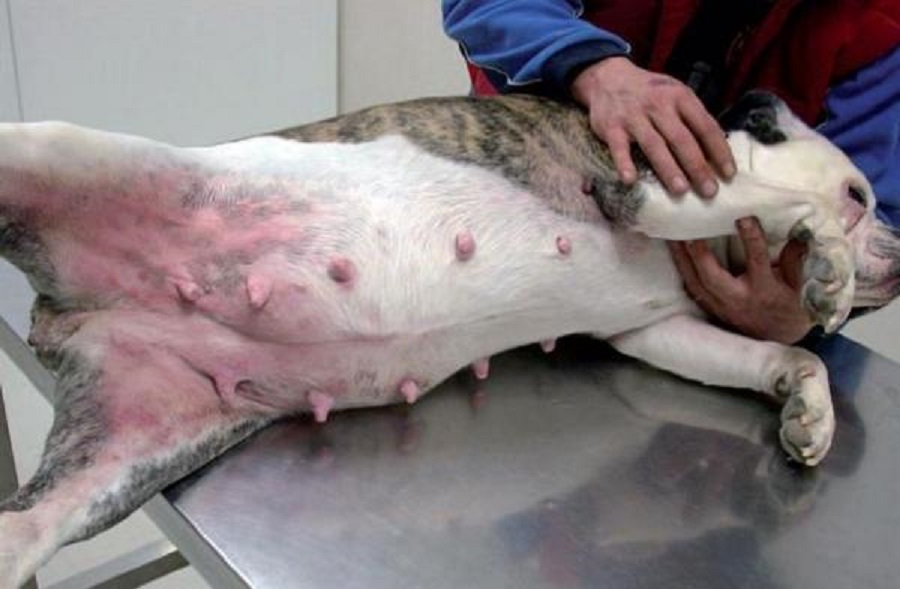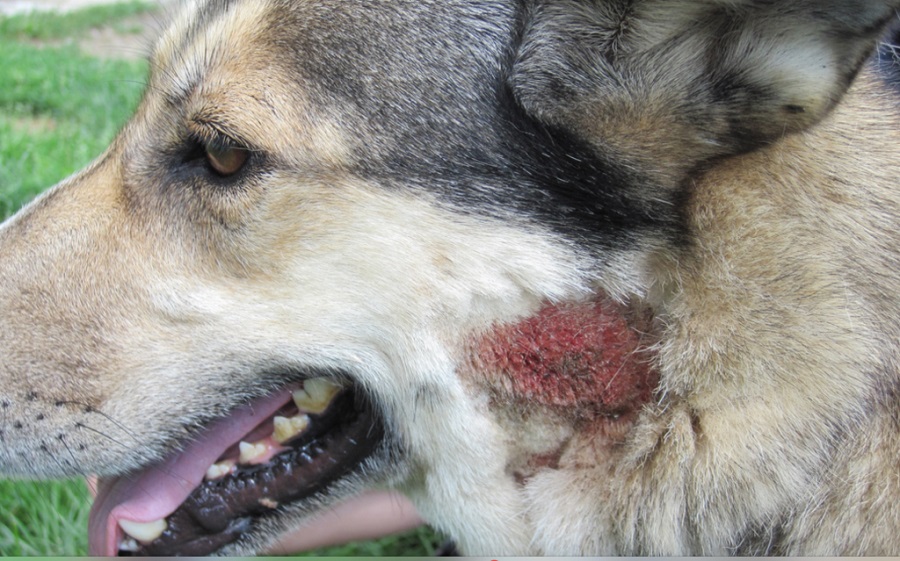Allergies or hot spots can make life unpleasant for pets and their owners. What should you know about animal skin problems before visiting the vet?
The symptoms of skin diseases vary depending on the underlying causes. They usually manifest as itching and scratching, redness, scabs, increased seborrhea, dandruff, or odor.
Animals can be allergic to household dust, fleas, pollen, or even human epithelial cells. Allergies are more common in spring and summer, as animals spend more time outdoors where allergens are more frequent. Allergic skin is often red, sensitive to touch. The animal licks and chews itself, and scabs appear on the skin as evidence of traumatization.

Allergies
Animals can be allergic to household dust, fleas, pollen, or even human epithelial cells. Allergies are more common in spring and summer, as animals are more outdoors and allergens, such as fleas and pollen, are more frequent. Most skin allergies manifest as persistent itching. The skin is often red, sensitive to touch, the animal licks and chews itself, and scabs appear on the skin as evidence of traumatization.
Treatment of allergies depends on their cause. Flea protection is recommended for all animals, especially allergic ones. When it is not possible to eliminate the allergen, antihistamines can be used similarly to humans. Unfortunately, in animals this treatment does not have such satisfactory results.

Hot spot
Another common problem is the so-called hot spot. It occurs most often in long-haired dog breeds such as retrievers, but can affect any breed. The triggering cause is not always clear, but the result is often an area of moist, red, extremely sensitive skin, which the animal constantly chews and licks. A distinct skin lesion thus develops in a very short time, and within a few hours, superficial inflammation occurs.
Although these lesions are very painful and appear aggressive, the infection is superficial, and treatment requires only the removal of the underlying cause (most often fleas, blocked anal glands) and appropriate topical treatment with creams or anti-inflammatory injections. Sometimes systemic antibiotics are necessary, depending on the veterinarian’s decision. Autotraumatization stops and healing occurs quickly after the correct therapy is introduced.

Recommendations
The cause of skin disease in pets is often not obvious, and the veterinarian will need a number of additional tests to identify it. These include a skin scraping to detect parasitic mites, blood tests to determine hormones, or a skin biopsy with histopathological examination.
Many skin problems are solved with a single treatment, but others will require long-term ongoing therapy. In any case of skin disease symptoms in your pet, always seek veterinary help.
Disclaimer: This article is for informational purposes only and does not replace professional consultation or examination of your pet by a veterinarian. If you have any concerns about your pet’s health, contact your veterinarian immediately.
This article was prepared by the veterinary clinic VETHOPE – www.vethope.cz
Vethope s.r.o.
Rozvodova 350/16, Prague 4
Opening hours:
Mon–Fri: 8:00 – 20:00
Sat: 9:00 – 14:00
Sun: 14:00 – 19:00
Tel.: +420 212 246 809
info@vethope.cz
Recommended products for supporting skin disease treatment

